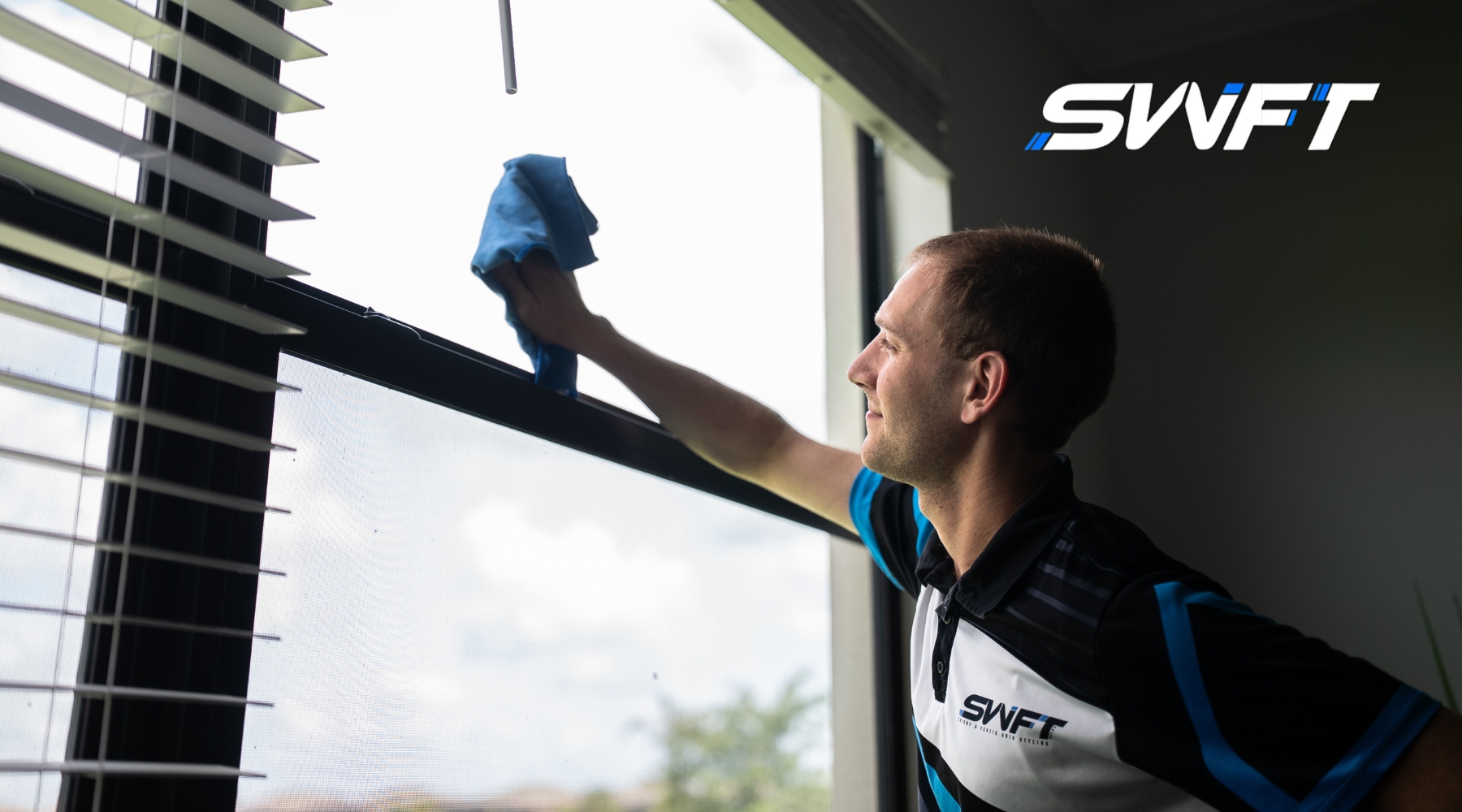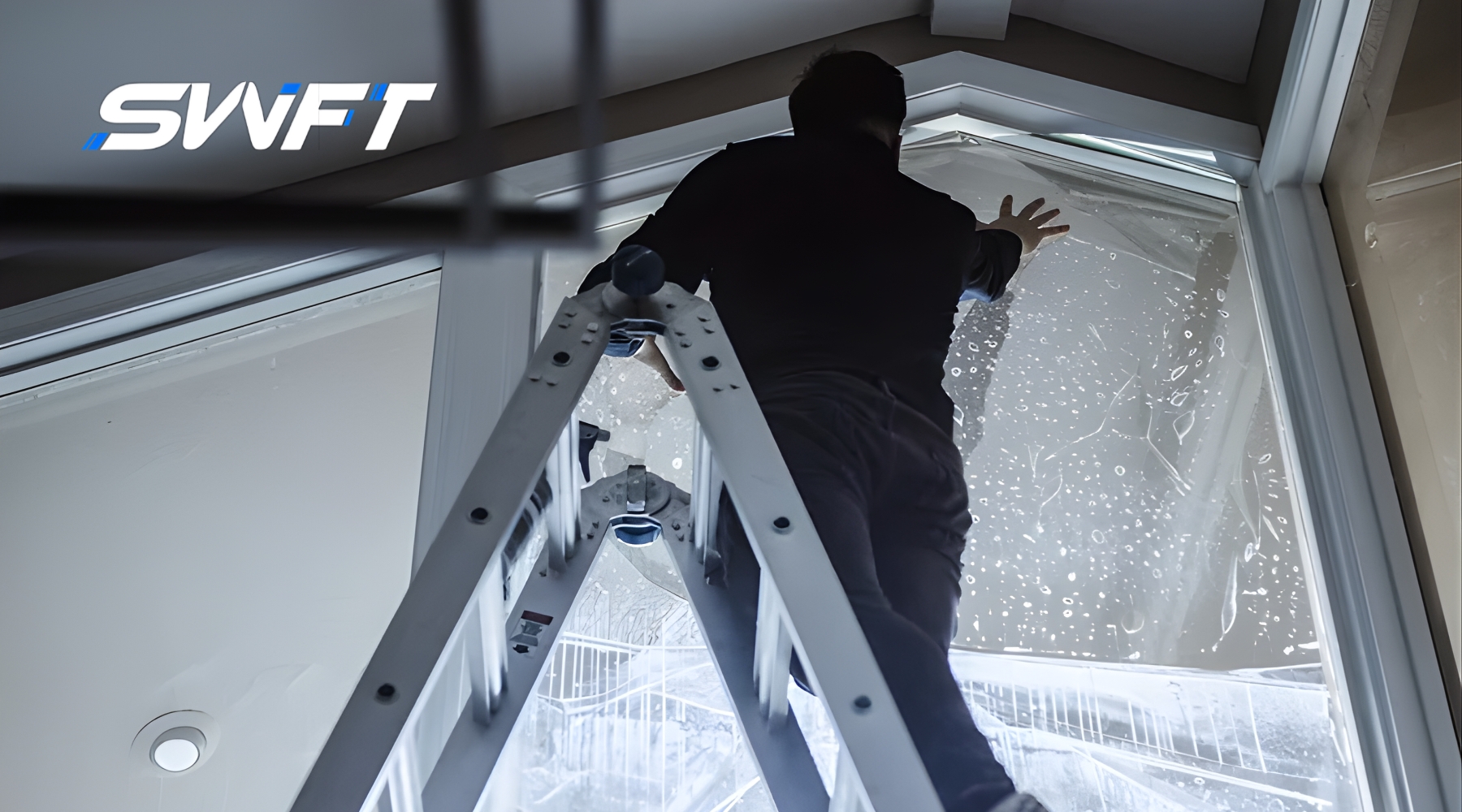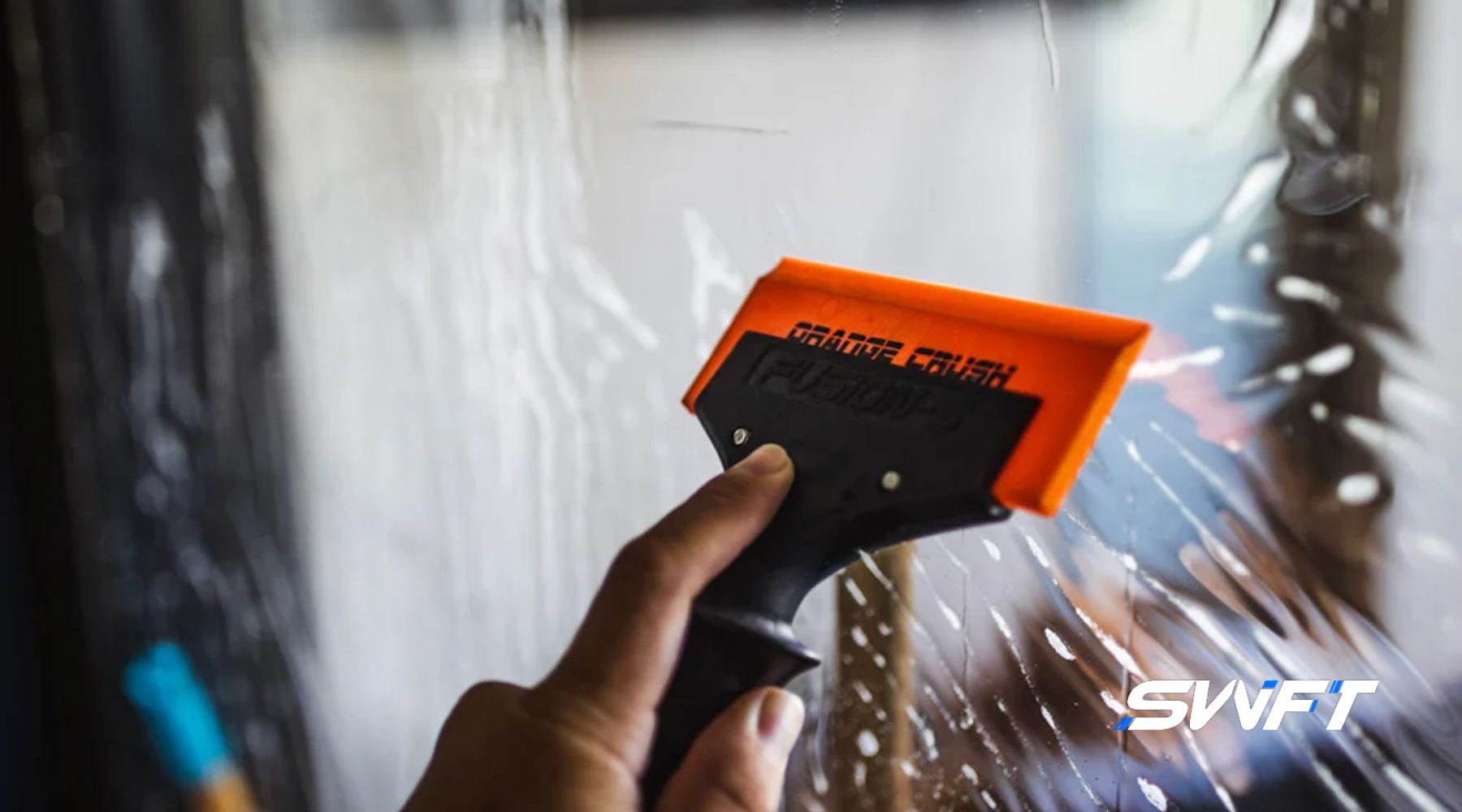If you’ve invested in residential window tinting, you already know the benefits: enhanced privacy, better energy efficiency, and protection from the Florida sun’s intense glare. But to enjoy these perks long-term, it’s essential to properly maintain and clean tinted home windows. Poor maintenance can shorten the film’s lifespan, reduce visibility, and even cause peeling or bubbling.
This guide is tailored for Fort Myers homeowners and outlines the best practices, tools, and common mistakes to avoid. Whether you’re a new tint owner or looking to preserve an older installation, this expert advice will keep your windows looking and performing their best.
Why It's Important to Maintain and Clean Tinted Home Windows
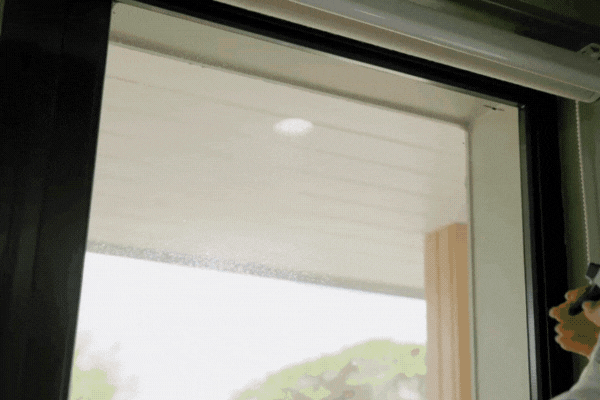
Window tinting isn’t just a cosmetic upgrade; it’s a protective barrier that enhances energy efficiency, reduces glare, and helps safeguard your home’s interior from UV damage. High-performance architectural films, like those installed by Southwest Florida Tinting, act as a shield against the elements while improving comfort and privacy.
However, like any protective feature, window tint requires proper upkeep. Over time, environmental exposure and improper care can degrade the film’s performance.
Neglecting maintenance can lead to:
- UV degradation, reduces the film’s ability to block harmful rays.
- Peeling or bubbling, often caused by trapped moisture or using harsh chemical cleaners.
- Loss of clarity and color, making windows look hazy or uneven.
- Shortened lifespan, which can result in costly early replacements.
In Fort Myers, FL, where windows endure intense sun, high humidity, and even salt-laden coastal air, the stakes are higher. Dust, pollen, and airborne debris also accumulate faster, increasing the risk of film damage if not cleaned regularly. Proper care not only keeps your windows looking sharp, but it also preserves their functionality for years to come.
How Often Should You Clean Tinted Windows?
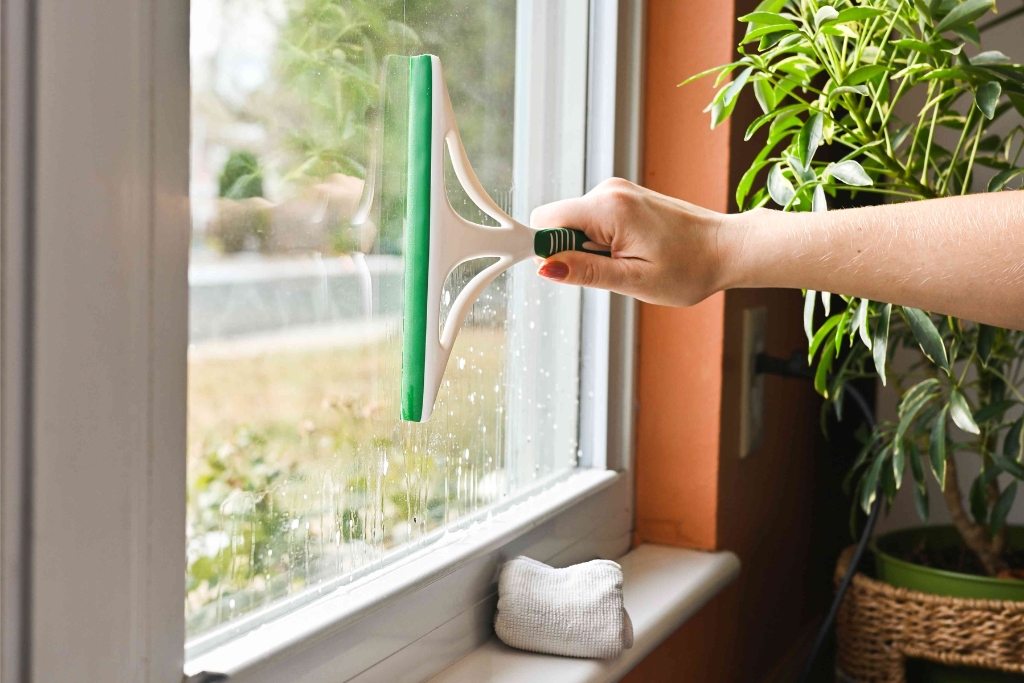
Living in Southwest Florida means more sun, humidity, and airborne debris than most regions, so keeping your tinted windows clean isn’t just about appearance; it’s about protecting your investment. Proper cleaning helps preserve the integrity and effectiveness of the window film.
Recommended Schedule:
- Light Cleaning: Once per month to remove dust, pollen, fingerprints, and smudges that can build up quickly in high-humidity environments.
- Deep Cleaning: 2–4 times per year, ideally at the start and end of storm seasons, to remove tougher grime and inspect for any early signs of damage.
- Post-Installation Tip: Always wait at least 30 days before cleaning new tinted windows to allow the adhesive to cure fully and prevent shifting or bubbling.
Consider These Factors:
- Location: Coastal homes may require more frequent cleaning due to salt air and sea spray.
- Traffic/Dust: Homes near busy roads or construction zones collect more dirt.
- Household Dynamics: Kids, pets, or frequent visitors can lead to more smudges and fingerprints, increasing the need for touch-ups.
Establishing a regular cleaning routine helps extend the life of your window tint and keeps your home looking sharp, inside and out.
Best Way to Clean Tinted Windows: Step-by-Step Guide
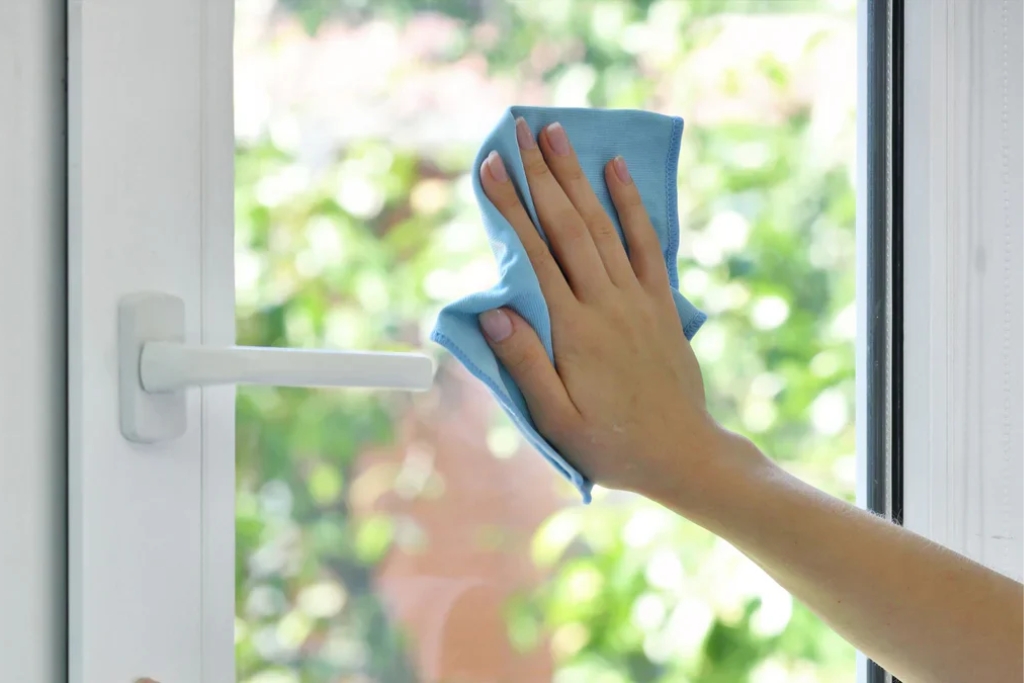
Cleaning tinted windows isn’t difficult, but it does require a gentler touch than standard glass to avoid damaging the film. With the right tools and techniques, you can maintain crystal-clear windows without compromising their performance.
What You’ll Need:
- Soft microfiber cloths (at least two): One for cleaning, one for drying and buffing.
- Spray bottle: For applying your cleaning solution evenly.
- Distilled water: Prevents mineral deposits that can cause streaks or haze.
- Mild dish soap (like Dawn) or an ammonia-free window cleaner: Ensures the film’s adhesive and color remain intact.
- Optional: Soft rubber squeegee: Helps achieve a streak-free finish, especially on large windows.
Avoid Using:
- Paper towels: They leave lint and can scratch the surface.
- Abrasive pads or brushes: These can cause tiny scratches that dull the tint over time.
- Ammonia-based products: Ammonia can break down the adhesive, leading to bubbling or discoloration.
- Razor blades or scrapers: Even light pressure can permanently damage the film.
💡 Tip: Always clean windows when they’re cool, preferably in the early morning or evening, to prevent cleaner from drying too quickly and leaving streaks.
Step-by-Step Instructions:
1. Dust the Window
Before spraying anything, use a dry microfiber cloth to gently wipe away dust and grit.
2. Mix Your Solution
Add a few drops of mild dish soap to warm distilled water in your spray bottle. Alternatively, use a commercial cleaner labeled “tint-safe” or “ammonia-free.”
3. Lightly Mist the Glass
Spray the cleaning solution directly onto your cloth, not the window. This prevents liquid from seeping behind the film, which can cause peeling.
4. Gently Wipe the Window
Using soft, circular motions, clean the glass surface. Avoid scrubbing or applying heavy pressure.
5. Dry and Buff
Immediately dry the surface with a second clean microfiber cloth or squeegee. Wipe in long, smooth strokes for a streak-free finish.
6. Work from Inside to Out
The inside layer is where the film is typically installed, and it’s more delicate. Always start inside and finish outside, using different cloths to avoid cross-contamination.
Common Mistakes to Avoid When Cleaning Tinted Windows
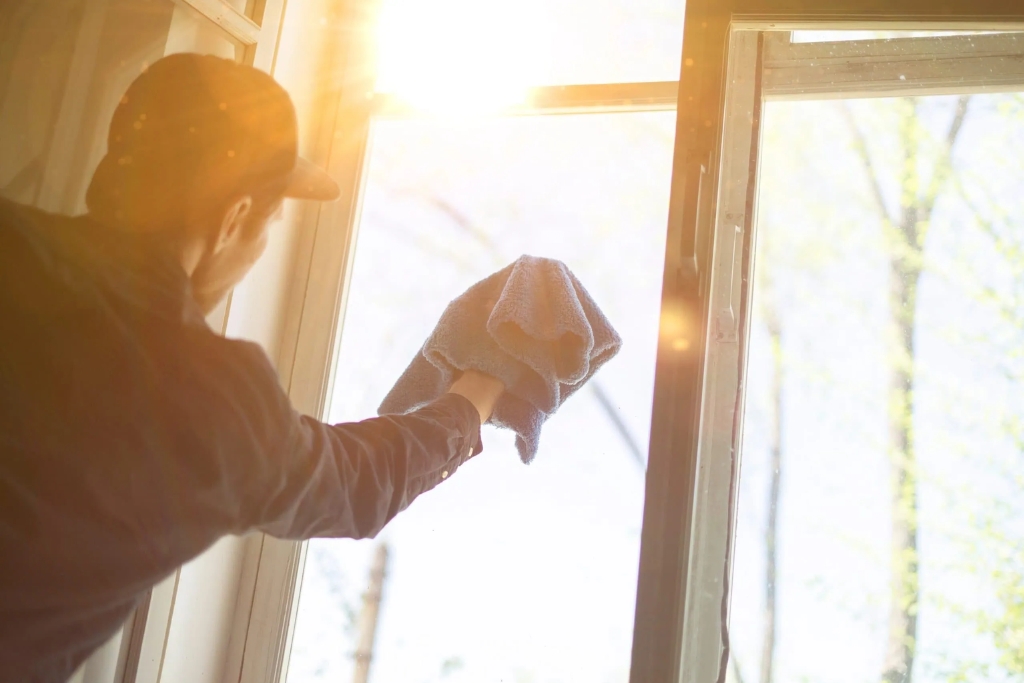
Even with the best intentions, small cleaning mistakes can cause long-term damage to your tinted windows. Avoiding these common mistakes will help maintain the film’s appearance and performance for years.
Frequent Errors to Watch Out For:
- Using ammonia-based cleaners: These harsh chemicals break down the film’s adhesive, leading to bubbling, peeling, and discoloration over time. Always choose ammonia-free alternatives.
- Cleaning in direct sunlight: Heat causes cleaning solutions to evaporate too quickly, leaving behind unsightly streaks or residue. Clean during cooler parts of the day for best results.
- Scrubbing with abrasive materials: Sponges, scouring pads, or rough cloths can leave micro-scratches that dull the film and reduce its UV protection.
- Over-saturating window edges: Excess moisture can seep beneath the film, weakening the adhesive and creating air bubbles or peeling edges.
- Using dirty or reused cloths: Even tiny particles of dirt can scratch the film during cleaning. Always use clean, fresh microfiber cloths.
- Neglecting regular maintenance: Allowing dirt and grime to accumulate makes cleaning more difficult and increases the risk of damaging the film during future cleanings.
💡 Bonus Tip: Don’t use generic “all-purpose” cleaners unless they’re clearly marked safe for tinted glass. When in doubt, stick to mild soap and water.
Tinted Window Maintenance Tips Beyond Cleaning
While regular cleaning is essential, comprehensive tint care goes beyond wiping down the glass. These simple practices will help you get the most out of your window film investment.

Easy Maintenance Tips for Long-Term Tint Health:
- Inspect regularly: Every few months, check for signs like bubbling, edge lifting, fading, or fine scratches. Early detection allows for timely repairs before small issues turn into costly replacements.
- Avoid window impacts: Keep sharp objects, heavy furniture, and pet claws away from tinted glass to prevent accidental scratches or damage to the film’s surface.
- Care for frames and seals: Clean and inspect window frames and seals to prevent buildup of grime and moisture that could creep under the film and loosen the adhesive.
- Limit prolonged moisture exposure: Avoid letting condensation or splashes from nearby bathrooms, kitchens, or humidifiers sit on the glass for long periods. Wipe away excess moisture promptly.
- Use window coverings wisely: Shades or blinds can provide additional UV protection and prevent overexposure in high-sun areas, helping extend the life of the tint.
- Schedule professional assessments: Southwest Florida Tinting not only installs premium residential films, but also offers guidance and inspections to keep your windows performing like new for years to come.
Regular attention to these small details will ensure your tint stays effective, attractive, and protective through every season.
Conclusion
Taking the time to properly maintain and clean tinted home windows helps you get the most out of your investment. From blocking UV rays to improving comfort and style, high-quality window film like the solutions offered by Southwest Florida Tinting deserves proper care.
Avoid harsh cleaners, clean regularly with the right tools, and pay attention to the subtle signs of wear. And when in doubt, consult professionals who know how to protect your home’s comfort and curb appeal.
Additional Resources
FAQs: Common Questions About Cleaning Tinted Windows
How to clean residential tinted windows?
Use a microfiber cloth and ammonia-free solution. Gently wipe in circular motions, then dry with a second cloth.
Is Dawn dish soap safe to clean tinted windows?
Yes, when used in small amounts and diluted with distilled water, it’s a safe and effective cleaner.
Why do tinted windows get streaky after cleaning?
Usually caused by using paper towels, harsh cleaners, or cleaning in direct sunlight.
Why should ammonia-based cleaners be avoided?
They degrade the film’s adhesive layer, leading to discoloration and peeling.
Why does window tint start to peel or bubble?
Moisture trapped under the film or improper cleaning methods are common causes.
Why is a microfiber cloth preferred?
It’s soft, lint-free, and non-abrasive, ideal for maintaining clarity without scratches.
Why does improper cleaning shorten window film life?
Harsh chemicals and abrasive tools physically damage the film, weakening its protective properties.
Southwest Florida Tinting & PPF (SWFT)
Phone
Opening Hours
Monday to Friday: 7AM - 7PM
Saturday: 9AM - 5PM
Sunday: Closed

